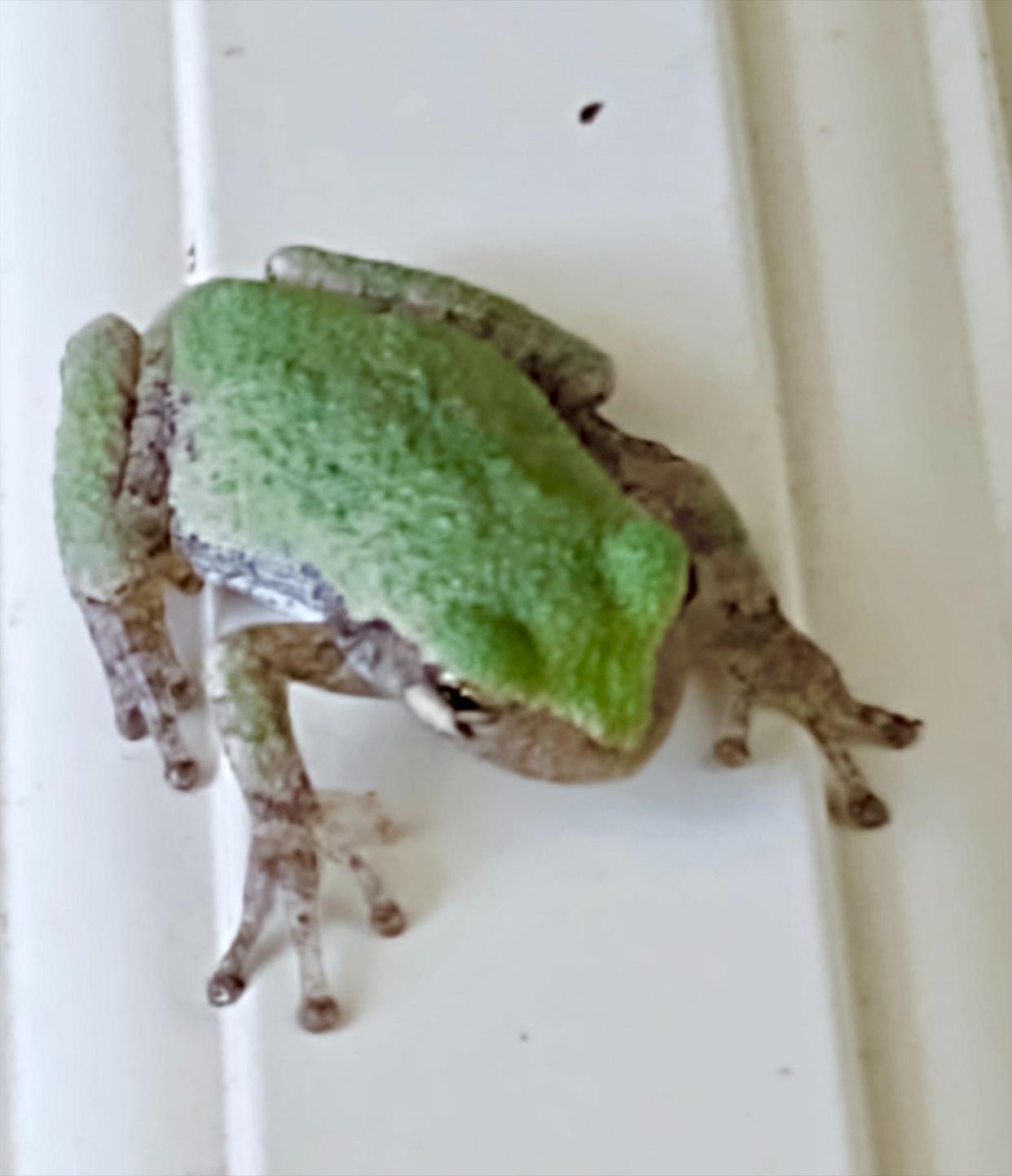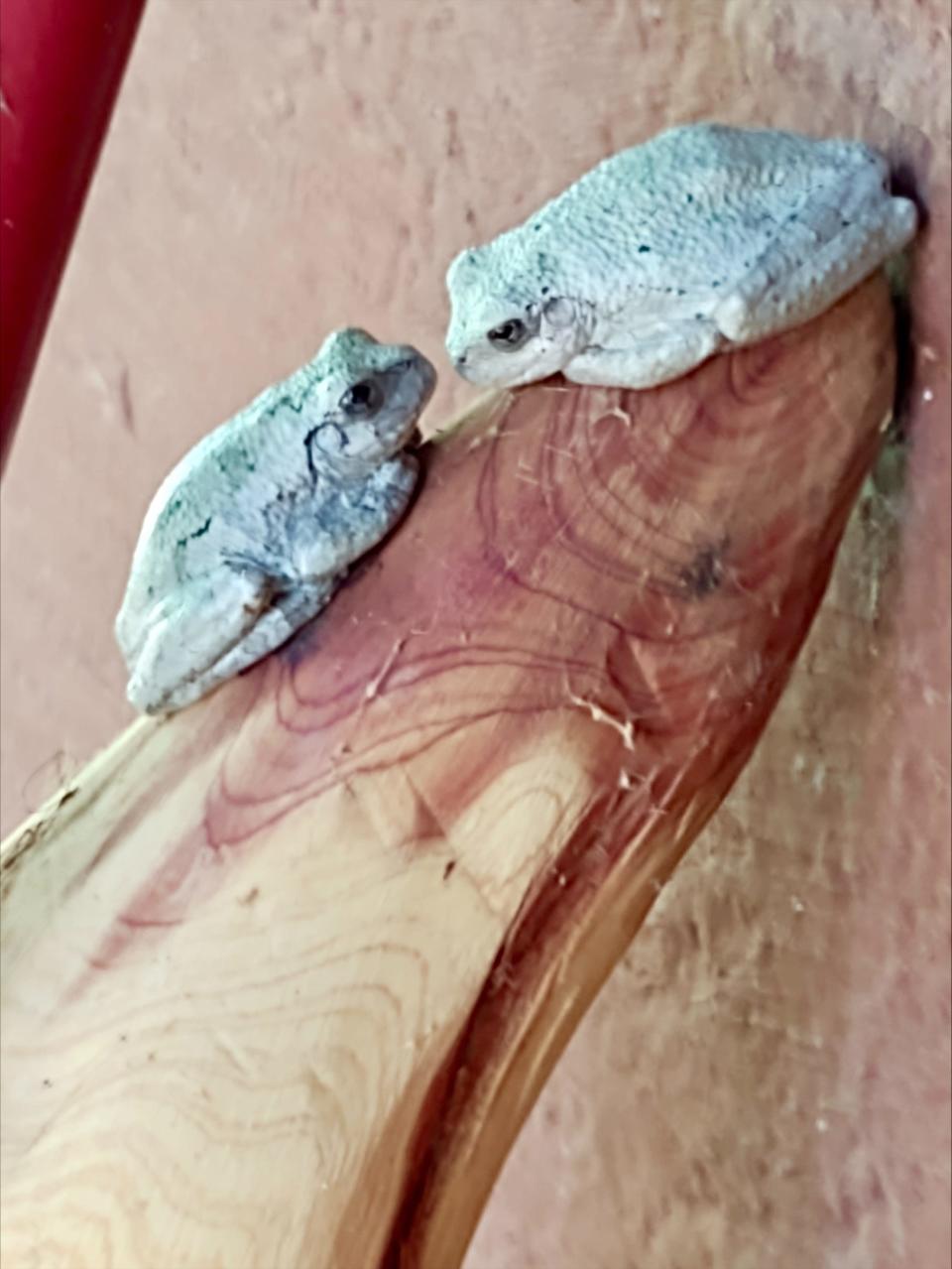Moths beware, the gray tree frogs are here ... to raid nighttime porches for a snack.

You should be so lucky.
My home is not so much unlike yours. The front porch light attracts a horde of bothersome moths every evening. The challenge, of course, is to open the front door without also admitting a bunch of those bothersome bugs.
My good fortune is that my home's front door has a small cadre of bug-eating frogs hanging tight on the vertical wall just up next to the porch light. Like I said: You should be so lucky.
Let me introduce you to my amphibian friend: the gray tree frog.

The very unique anatomical feature of this frog is that it has a suction cup on the tip of each of its toes. That allows it to effortlessly cling to near-impossible surfaces such as window glass and the outside wall of my home.
To my decided delight, the trees in my home's yard are now brimming with a multitude of frog calls. It makes me glad to know that last year was a fertile one for the production of extra offspring.
I rue the fate of any pesky moth that designs to take up residence near my home's front door.
Neil Garrison was the longtime naturalist at a central Oklahoma nature center. His email is atlatlgarrison@hotmail.com.
This article originally appeared on Oklahoman: Oklahoma frogs await moths attracted to nighttime porch lights

